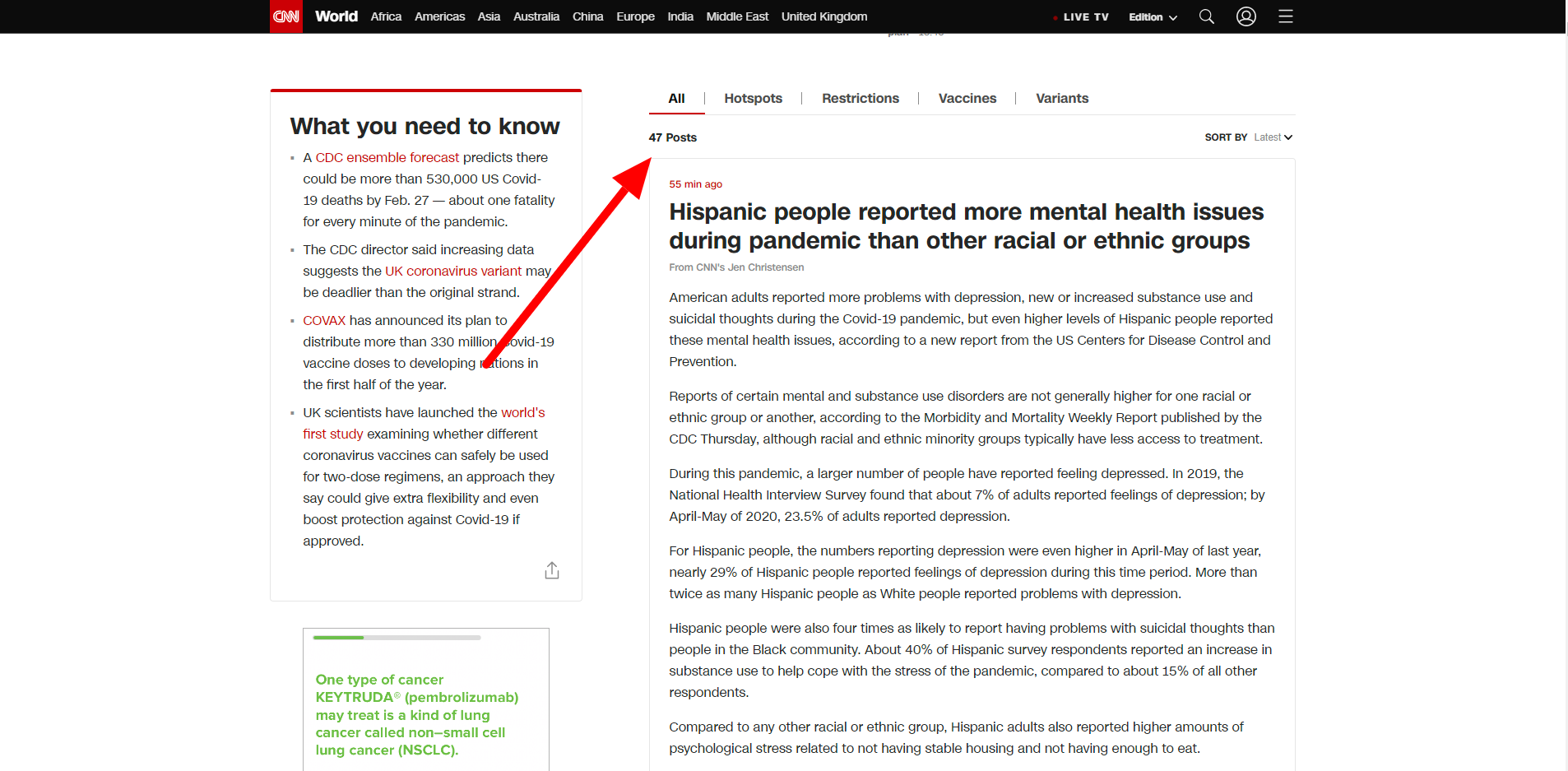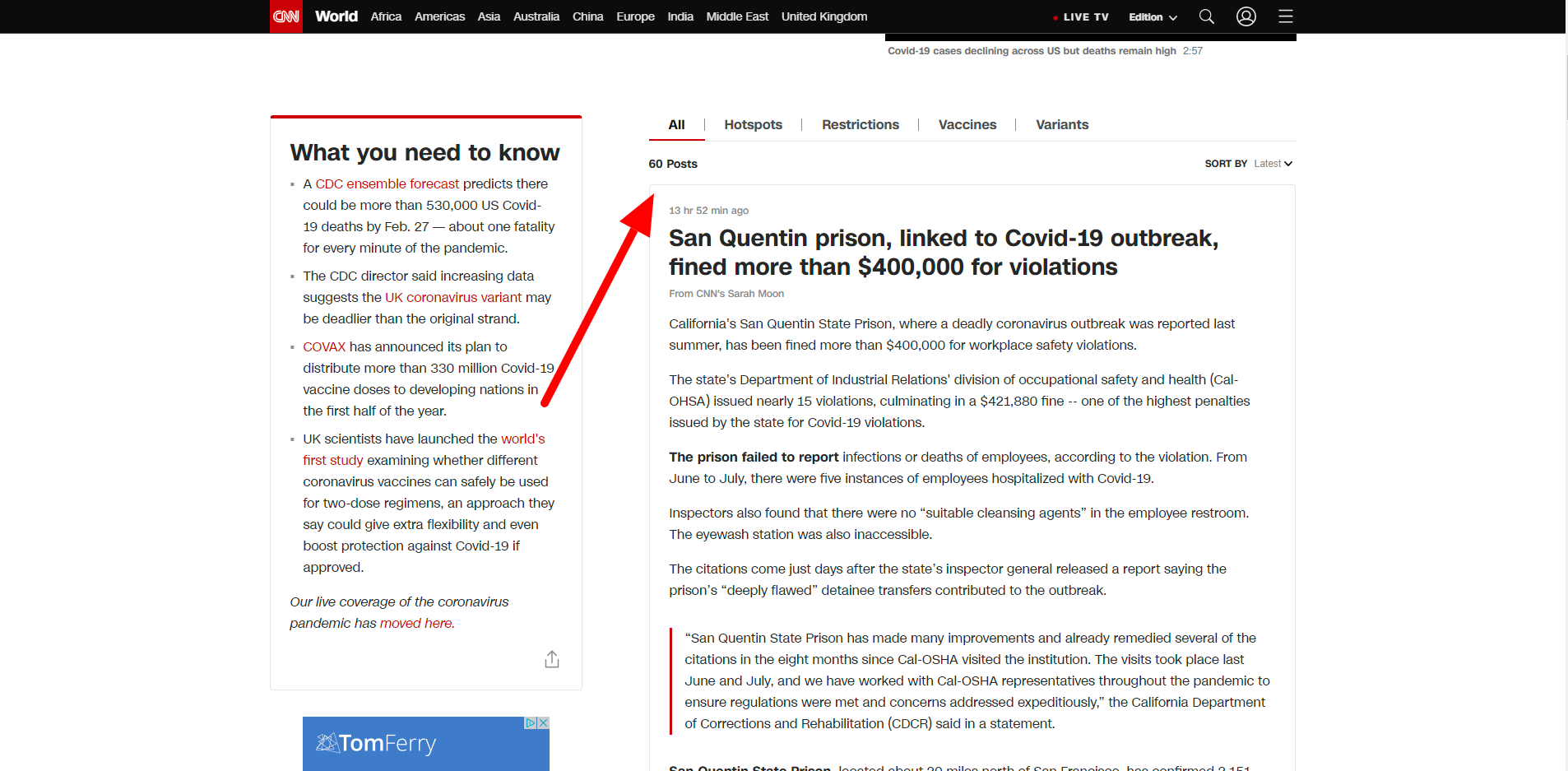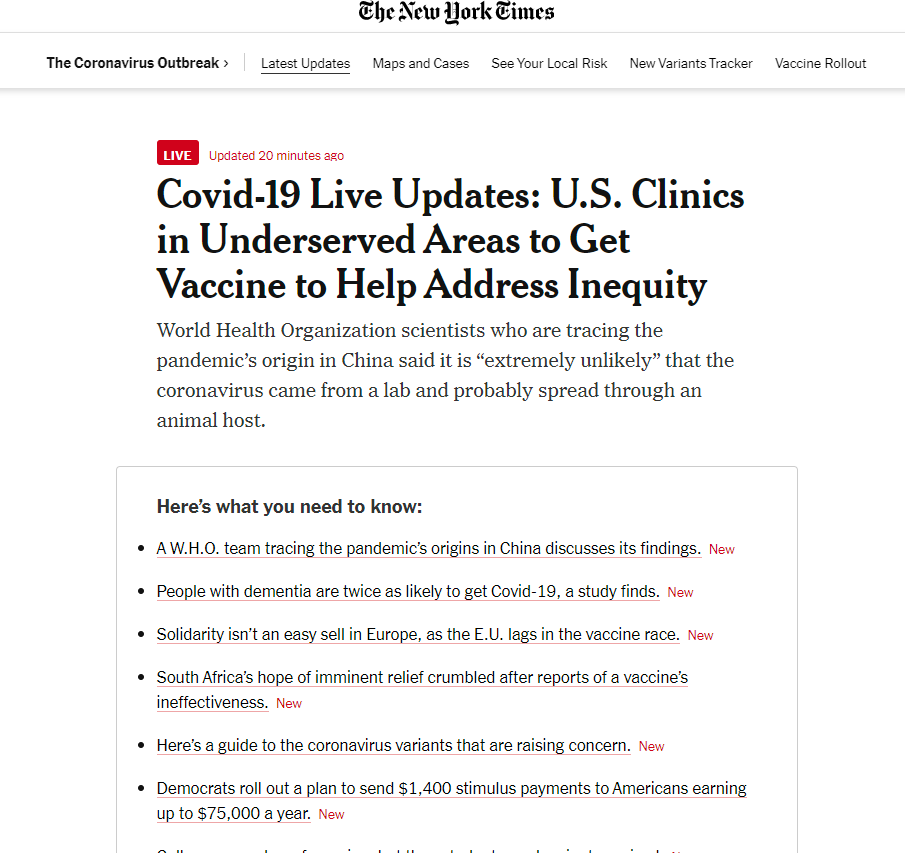24 Feb 3 SEO Lessons From The New York Times & CNN on How to Rank #1 via @johnelincoln
News sites often know their SEO.
They have to. Traffic is how they make money.
News sites also have a ton of content and organizing it properly is key if they want to stay ahead in some of the most competitive SERPs out there.
Savvy news sites are cracking the code on how to keep their content front and center with clever optimizations that create opportunities in Search, Stories, Google Discover, and more.
Here are some key optimization tricks and real-world examples to help your site rank for competitive terms.
Whether the terms are consistently popular or surging in the wake of breaking news, these methods should help.
Note: We use terms around the Coronavirus pandemic here as an example because they are so competitive and show very specific strategies.
Teachings From News Sites on Ranking for Competitive Terms
Since early 2020, news sites like The New York Times and CNN have maintained a stronghold on the crowded keywords around the Coronavirus pandemic, and other areas as well.
While I’m not working with any of these sites, I did notice they are using three strategies I often recommend.
Here are some of the things they are doing.
1. They Are Battling to Stay the Most up to Date
Perhaps the most important tactic news sites are using is updating the page multiple times a day.
They are keeping their page 100% up to date.
They are proactively updating as much as possible, they keep a running list of recent stories on the page, they speculate and make new news, and they update all the old stories.
Check out this page that had 47 articles on it.


I went back to this page the next day and saw that it had 60 articles on it.
Think about that for a minute…


Here’s why this helps SEO.
- It keeps Google coming back to the page to see what’s new.
- It keeps users on the page longer.
- The page appeals to a wider audience.
2. They Make It Easy to Get to the Right Article
Here, we see an example of a page on The New York Times website.
You will notice this big section at the top: “Here’s what you need to know.”
That section has all of the top articles for the day.


Why do they do this?
- The user gets a full overview of the topic.
- The reader can jump to the part that is most interesting to them.
- Google recognizes that this is a hub page that includes stories around a timely topic.
- The anchors help to keep people on the page longer.
- Readers see that they can come back here for another summary in the future.
Notice that the publication states when the page was last updated at the top in red.
You can see they have this down to the minute.
Also, if you click on an anchor something interesting happens. If you click on a page anchor it takes you to this URL:
[https://www.nytimes.com/live/2021/02/09/world/covid-19-coronavirus#colleges-vowed-a-safer-spring-but-then-students-and-variants-arrived]
In case you didn’t know, Google does not index anything in a URL after a # (in most cases).
So the bottom line is that we have a very up-to-date page with a ton of content.
Now, these articles do have their own URLs, and those URLs have a rel canonical to themselves on them.
[https://www.nytimes.com/2021/02/09/world/covid-coronavirus-lilly-antibody-treatment.html]
When I first reviewed these pages I thought they were staying on static URL for all of these articles.
For example, they would just publish everything on a category page such as [nytimes.com/world/covid-coronavirus].
However, that isn’t the case.
They are creating new hub pages every day, and new articles for them.
This helps to get placed in Google News, and to publish a fresh page to get indexed.
This works for news sites, but may not work as well for a general site where someone wants to keep an evergreen page.
As you can see, they are creating a new page each day here:
[https://www.cnn.com/world/live-news/coronavirus-pandemic-vaccine-updates-02-22-21/]
[https://www.cnn.com/world/live-news/coronavirus-pandemic-vaccine-updates-02-21-21/]
[https://www.cnn.com/world/live-news/coronavirus-pandemic-vaccine-updates-02-19-21/]
3. They Put in Redirects & Refresh Stories to Stay Current
Now, you might be wondering if the stories have their own URL and what they do with old URLs.
Here is one example:
[https://www.nytimes.com/live/2021/02/09/world/covid-19-coronavirus/the-us-will-start-sending-vaccine-to-clinics-in-underserved-areas-as-part-of-an-effort-to-ensure-equity]
Now, the funny thing is that if you click on that URL, it will redirect you here:
[https://www.nytimes.com/live/2021/02/09/world/covid-19-coronavirus/the-biden-administration-will-start-sending-vaccines-to-clinics-in-underserved-areas-as-part-of-an-effort-to-ensure-equity]
We can see they’ve updated this story and redirected it to a new URL.
This shows they are keeping tabs on all the stories and addressing the important ones to stay current.
What to Learn
We have learned a few things:
- These new sites are creating new pages with the most up-to-date content.
- They are creating massive pages that are kept up to date by the minute.
- They are going back and addressing articles that need to be updated.
Is this the best strategy?
It is hard to argue with the results. But could they be better?
These sites are constantly dominating the top spot for important news-related terms.
While it could be argued that they should test keeping the same category or article URLs, consider canonical URLs for articles to categories, or not have articles with their own pages at all, I am sure there is good reason for their current structure.
What do you think of their technical SEO optimization? I would love to hear your thoughts.
More Resources:
Sorry, the comment form is closed at this time.